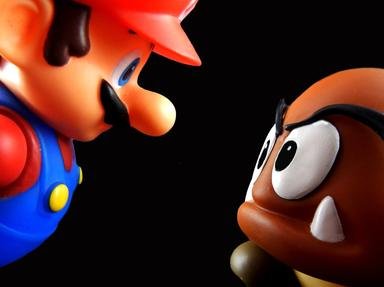Quiz Answer Key and Fun Facts
1. The very first July/August 1988 issue of "Nintendo Power" features a famous claymation sculpture of Mario and the new protagonist of "Super Mario Bros. 2". Who is the final boss of "Super Mario Bros. 2"?
2. The second issue of "Nintendo Power" showed a grisly scene of Simon Belmont holding a decapitated head of Dracula from "Castlevania II: Simon's Quest", a famously obtuse game players have little chance of completing without strategy guides. Where on the world map must Simon kneel with a red crystal equipped for the tornado to take him to Bodley Mansion?
3. Issue 21 of "Nintendo Power" featured the NES title "StarTropics". At one point, one of the game's characters instructs the player to physically dip an actual letter that came in the game's packaging in water in order to reveal a hidden code needed to proceed. What three digit number does the letter reveal?
4. The November 1991 issue features "Final Fantasy II", which has been critically acclaimed by numerous professional publications in the subsequent decades since its release. Post "Final Fantasy VII", all "Final Fantasy" games in all markets reflect the original Japanese naming convention for the series. What is "Final Fantasy II" known as now?
5. Guile from "Street Fighter II: The World Warrior" graced the cover of the July 1992 edition of Nintendo Power. Capcom would release several versions of "Street Fighter II" for the Super Nintendo, but which one listed was for the Sega Genesis/Mega Drive?
6. Appearing on the April 1993 cover, "Star Fox" gave players polygonal 3D graphics using the Super FX chip. What other notable first party SNES game used that chip for technical hijinks impossible to replicate on standard hardware?
7. The August 1997 issue featured everyone's favorite secret spy, James Bond! Acknowledged by the developers, what character actually breaks the auto-aim mechanics of multiplayer mode?
8. The January 1997 issue was unique in Nintendo Power's history for having four different covers, each featuring a different character from the 1996 N64 game "Star Wars: Shadows of the Empire". The first level of the game was a recreation of what action set-piece from the original "Star Wars" Trilogy?
9. Sonic the Hedgehog, Mario's arch-rival from the early 1990s, appeared on Nintendo Power's March 2002 issue promoting the GameCube title "Sonic Adventure 2: Battle". In order to give that game a more "American flavour", the developers based its levels on what American city?
10. "New Super Mario Bros. 2" for the 3DS appeared on the cover of the very last issue of Nintendo Power from December 2012. This game featured the Super Leaf and marked the return of "Raccoon Mario". What was the last game in which you could play as "Raccoon Mario" before "New Super Mario Bros. 2"?
Source: Author
berenlazarus
This quiz was reviewed by FunTrivia editor
kyleisalive before going online.
Any errors found in FunTrivia content are routinely corrected through our feedback system.
